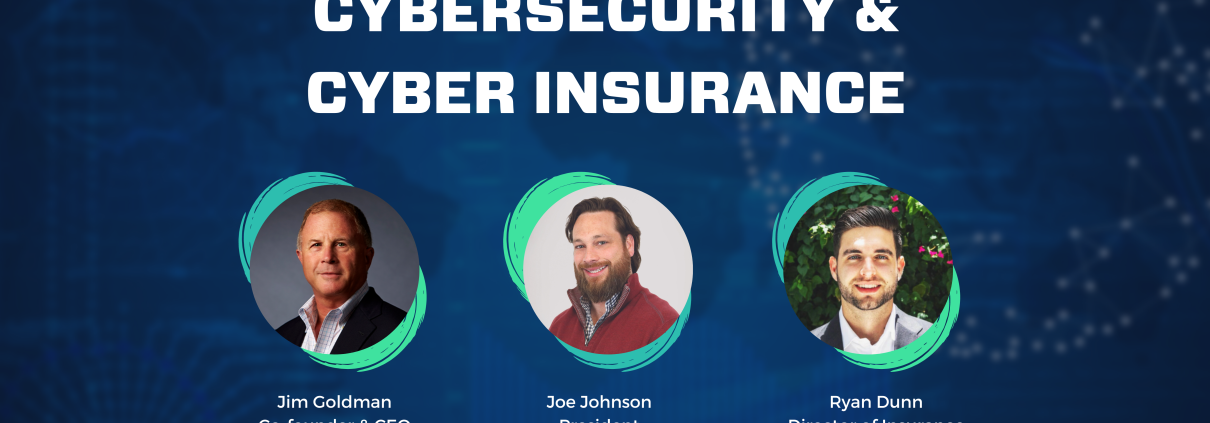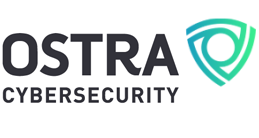[Webinar Recap] Get a Grip on Cyber Security & Cyber Insurance
Did you miss “Get a Grip on Cyber Security & Cyber Insurance,” the free webinar presented by Ostra and Trava on April 20? With cybercrime and ransomware increasing exponentially in today’s business climate, small and medium-sized businesses must be more cyber-savvy than ever in their day-to-day operations.
Watch a free, on-demand replay of the webinar to learn how SMBs can better protect themselves and manage risks by sharpening their grasp of cybersecurity and cyber insurance. The webinar was co-hosted by Trava, one of Ostra’s trusted Channel Partners. Trava is a cyber risk management firm that integrates assessments, vCISO insights, and insurance to protect small and midsize businesses from the potential damage of cyber threats.
In this educational 30-minute session, Trava’s CEO/Founder Jim Goldman moderates a discussion with Ostra’s President, Joe Johnson, as well as Ryan Dunn, Director of Insurance at Trava. These cyber industry experts cover topics such as:
- What is the relationship between cyber security maturity and cyber insurance for small and medium sized businesses?
- How can SMBs sort through the noise of cyber security and cyber insurance in order to prioritize strategies?
- What action items should an SMB take to establish their own comprehensive cyber security program?
- Are there key questions to ask your tech team and vendors when assessing cyber solutions?
- What’s the difference between cybersecurity vs. cyber liability insurance? Do you really need both?
The current situation
Ryan Dunn shared that insurance is always more successful when carriers have enough data on hand to effectively predict probabilities and risk factors. However, since cyber risks are constantly changing, risk profiles from even five years ago are no longer relevant today.
Compounding the problem, many of today’s cyber insurance applications are full of overly-technical or irrelevant questions that have no ability to uncover the real-time, gaping holes in a company’s cybersecurity strategy. For example, if a company says they are using multi-factor authentication as part of their cybersecurity strategy, is anyone fact-checking or validating that? Also, just because a company might have adequate guardrails around their data today—or at the time of their insurance application—doesn’t mean they will still be safe tomorrow, next week, or next month.
In summary, hardly anyone is comfortable in the current cyber insurance landscape. On one hand, business owners are dealing with insurance premium increases with almost no losses. Meanwhile, insurance agents are dealing with increased cybersecurity requirements and stipulations from insurance carriers—they are not cybersecurity experts, and yet they have to relay this news to clients. A massive increase in cyberattacks is fueling the cycle, yet it’s practically impossible to predict a cybersecurity loss using traditional actuarial tables.
The path forward
Tackling cybersecurity and cyber insurance can produce an overwhelming sense of “doom and gloom” if you are looking at it from reactionary standpoint. Being proactive, taking stock, and having a plan is a much better approach.
According to Joe Johnson, it’s essential for SMBs to understand their cybersecurity vulnerabilities before proceeding with a plan of attack. In practical terms, he recommends the following sequence.
Building Your Cybersecurity Strategy
- Conduct cybersecurity assessments to identify in vulnerabilities
- Find a vCISO or a trusted advisor with a vested interest in protecting your business and your clients
- Provide regular, ongoing cybersecurity training for employees
- Put cybersecurity policies in place to protect your organization
- Deploy cybersecurity tools with multiple layers of high-caliber defense to protect against known and unknown threats
- Prepare for an event, which should include cyber insurance as well as an incident response plan, regular penetration testing, and active monitoring
Since most business owners and even IT departments don’t have in-depth cybersecurity expertise, an important first step is to reach out to an expert or trusted advisor who can partner with you in these steps. Download: Cybersecurity Strategy Tips from Ostra and Trava.
Access the Free, On-Demand Replay
To access a free replay of this webinar, click here.
Learn more about Ostra’s commitment to making cybersecurity more cost-effective for small and medium-sized businesses, or contact Ostra today to get started with a free cybersecurity assessment.
To learn more about cyber insurance, connect with Trava.
As Your Trusted Cybersecurity Team, Ostra makes cybersecurity simple and accessible to businesses of all sizes. Ostra provides its partners and their clients with a multi-layered, comprehensive and fully managed Security as a Service.






